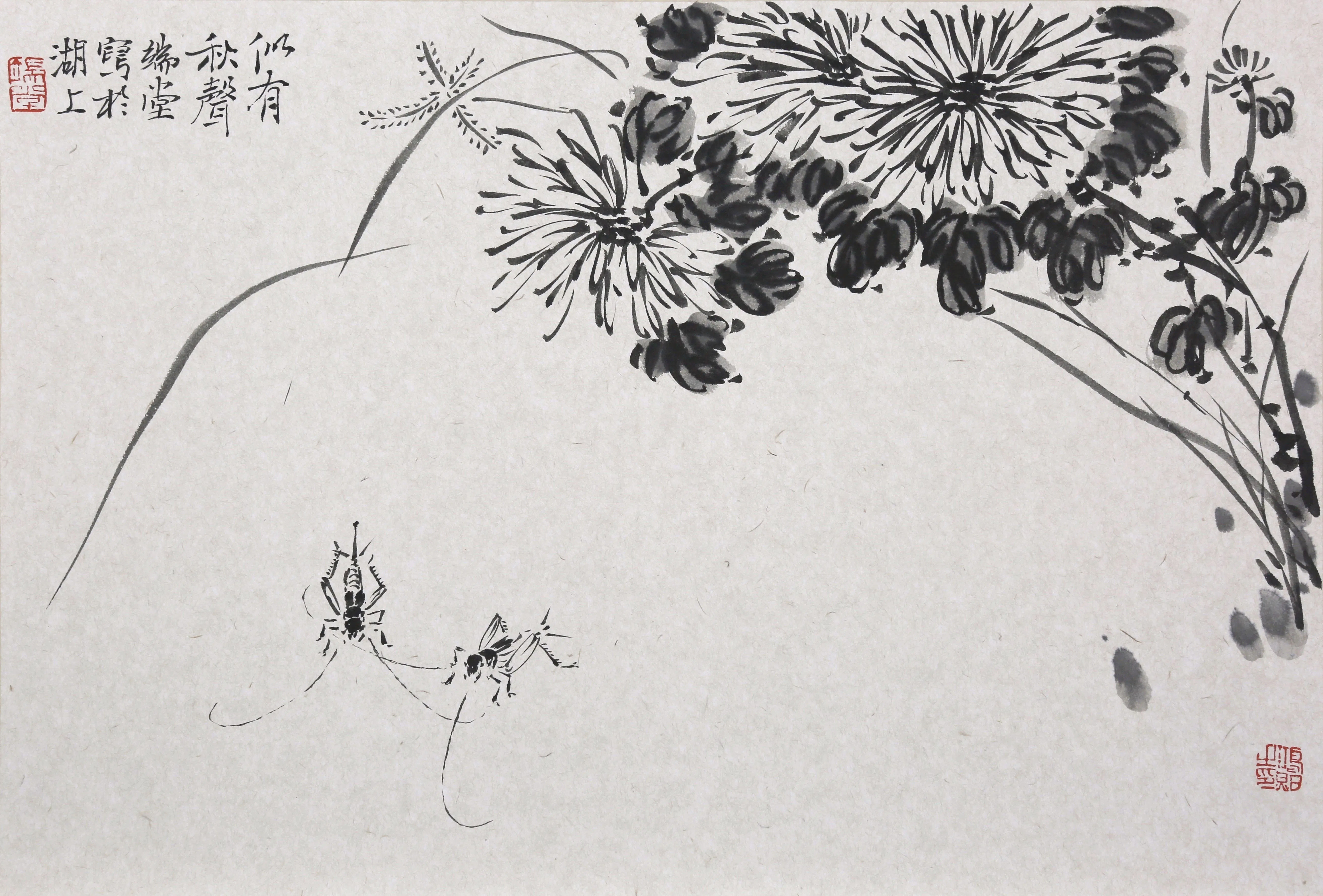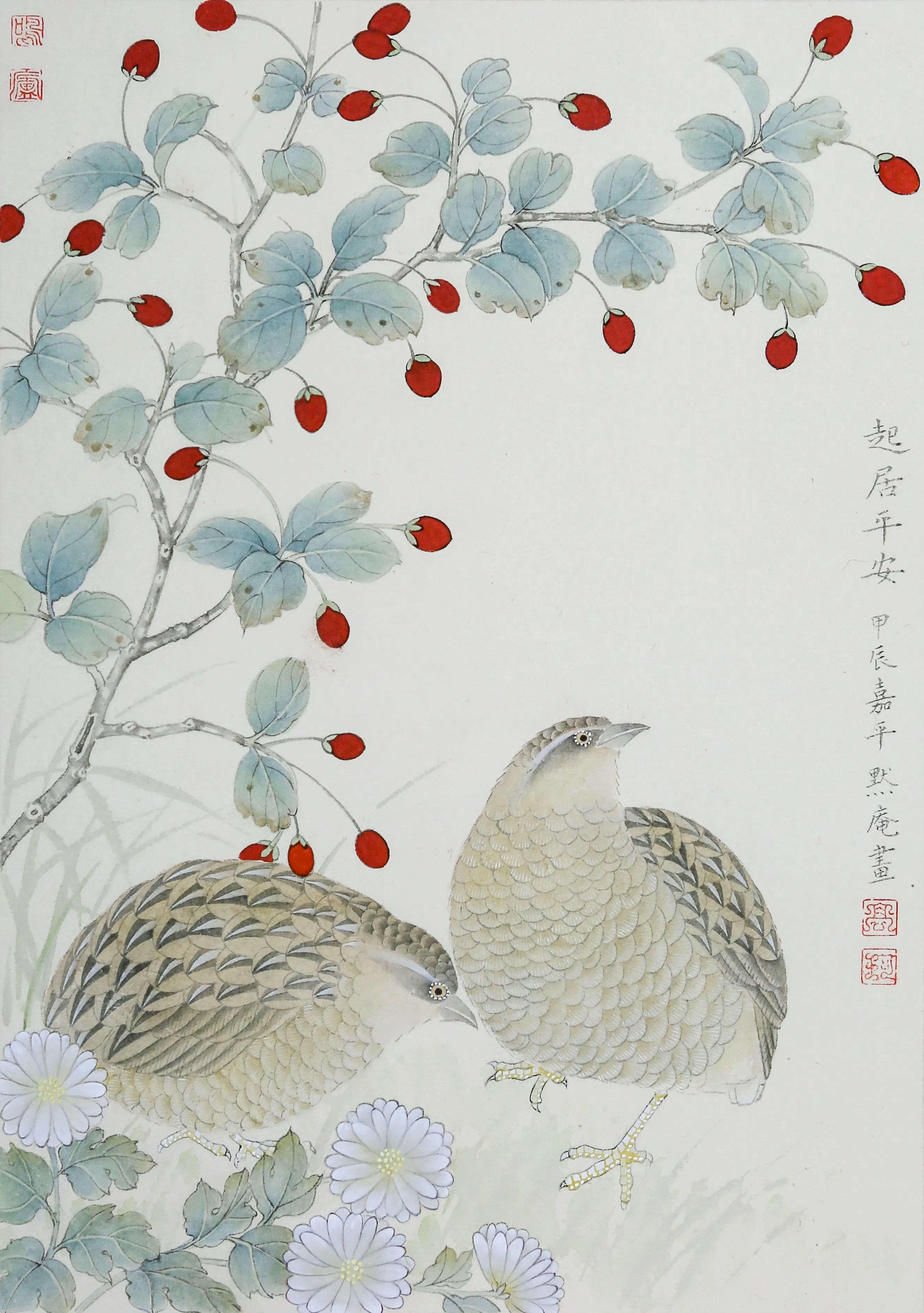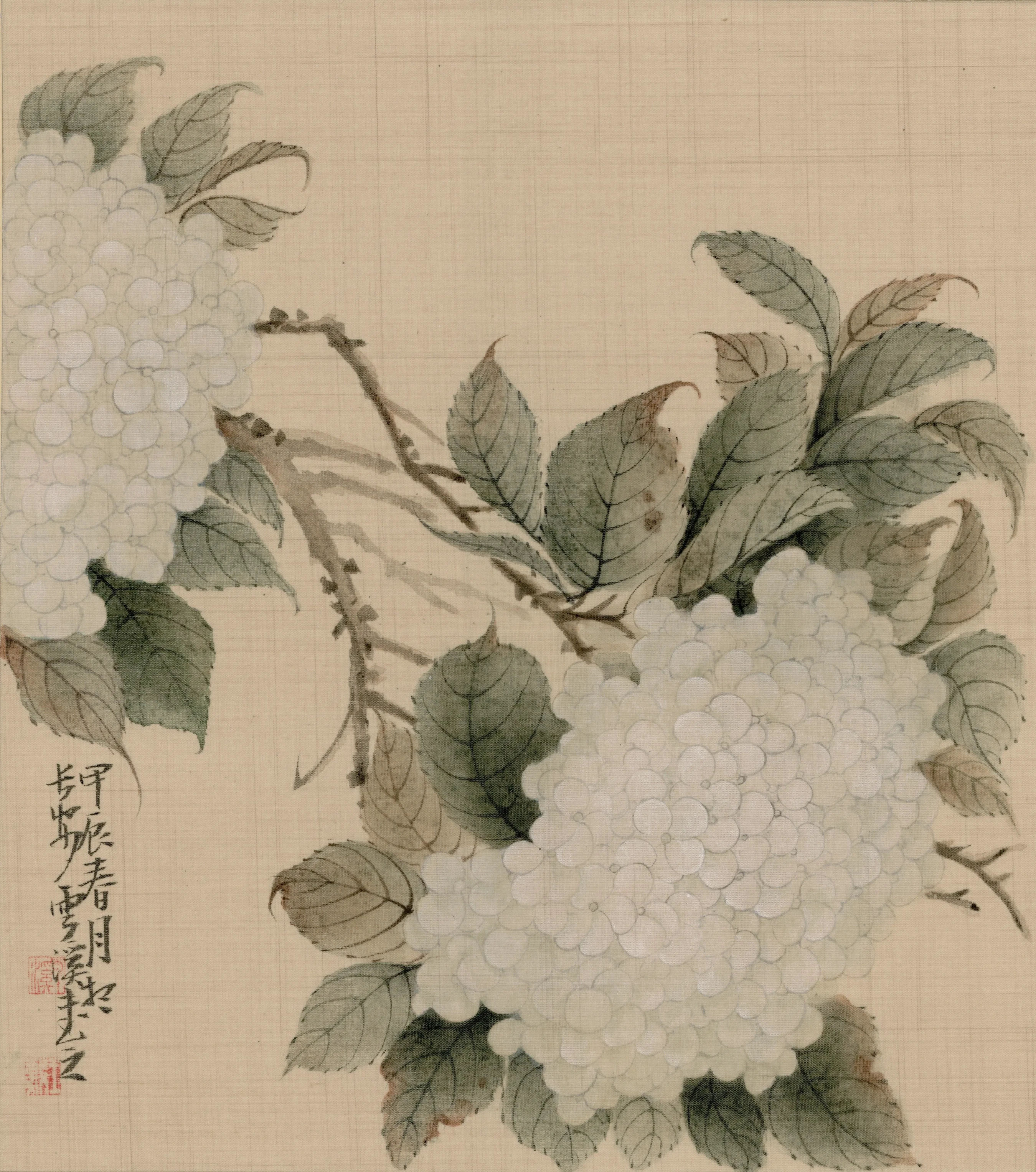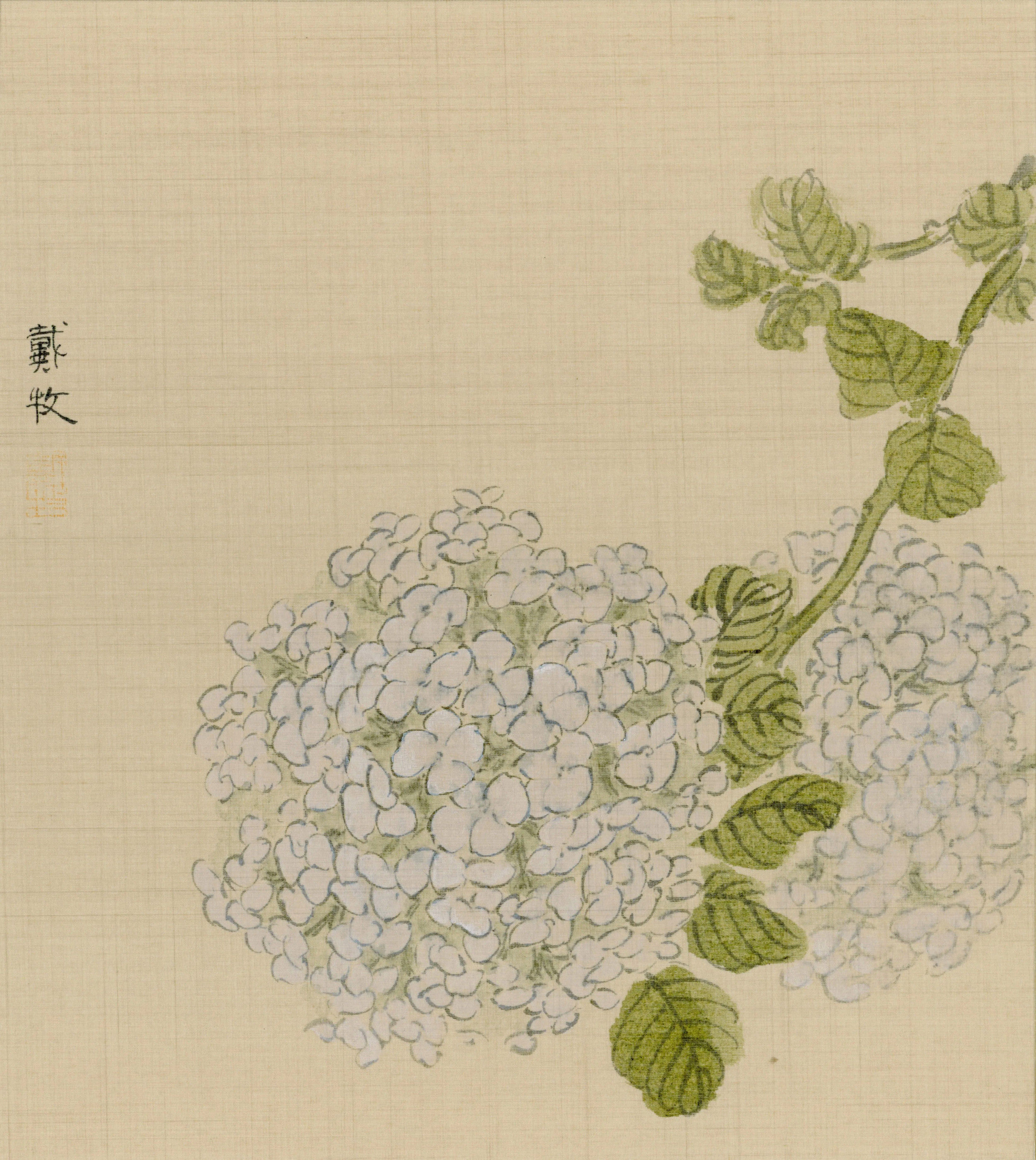Birds and Flowers: Symbolism in Chinese Art
花鳥畫:中國藝術中的象徵主義

In the realm of Chinese art, flowers and birds are never merely what they seem. Each brushstroke tells a story, each composition whispers ancient wisdom. From the defiant plum blossom breaking through winter frost to the graceful crane soaring among clouds, these paintings speak a sophisticated language of symbols developed over millennia. As we decode this visual poetry, we discover not just an art form, but a philosophy that captures humanity's eternal dialogue with nature, where every petal and wing bears witness to our deepest aspirations and timeless values.
Chinese art, with its millennia of tradition, has long been celebrated for its ability to distill the essence of nature into a powerful visual language. Among its most cherished genres is (huāniǎo huà 花鳥畫)—paintings of flowers and birds. More than mere decorative works, these pieces serve as intricate conveyors of symbolism, philosophy, and emotion. Each bird and blossom carries its own meaning, whispering stories of harmony, resilience, and the human connection to the natural world.
A Harmony of Nature and Spirit
At the heart of Chinese (huāniǎo huà) lies a profound respect for the natural world. This genre emerged during the Tang Dynasty (618–907) and flourished in the Five Dynasties and Song periods (10th–13th centuries). Unlike Western still life paintings, which often emphasize realism, Chinese flower-and-bird paintings are imbued with a spiritual quality. They seek not to replicate, but to evoke—a balance between the external appearance of nature and its inner essence.
This is why these works rarely feature detailed landscapes or complex backgrounds. Instead, the focus is on the subjects themselves, suspended in an almost ethereal space. The empty areas of the painting—often mistaken for "blank"—carry as much weight as the painted elements. They represent the invisible forces of nature: the wind that rustles petals, the air that carries a bird in flight, or the silence that frames a song. In this simplicity lies the genre’s elegance and depth.
 Fig. 1 Li Hongzhao (b. 1959), Sounds of Autumn, 2023
Fig. 1 Li Hongzhao (b. 1959), Sounds of Autumn, 2023
The Language of Flowers
Flowers in Chinese art are never just flowers. Each bloom tells a story, speaks a metaphor, or embodies a virtue. The plum blossom (méihuā 梅花), for instance, is a symbol of perseverance and renewal. Blooming in the heart of winter, it defies the harsh cold and heralds the promise of spring. Similarly, the lotus (liánhuā 蓮花) rises pure and unblemished from muddy waters, symbolizing spiritual enlightenment and moral integrity.
Peonies (mǔdān 牡丹), often called the "king of flowers," are emblems of wealth, honor, and prosperity, their lush petals evoking imperial grandeur. Orchids (lánhuā 蘭花), delicate and unassuming, signify refinement and scholarly pursuits. Chrysanthemums (júhuā 菊花) are the flowers of autumn, associated with resilience and a quiet, introspective strength. In every petal and leaf, a narrative unfolds, connecting the viewer to centuries of cultural memory.
 Fig.2 Gao Ke, Peaceful Living (Quail), 2024
Fig.2 Gao Ke, Peaceful Living (Quail), 2024
The Voices of Birds
Birds, too, are imbued with meaning. The crane (hè 鶴) is a symbol of longevity and immortality, often seen alongside pine trees in paintings that celebrate enduring life. Magpies (xǐquè 喜鵲) are harbingers of joy and good fortune, their cheerful chirping a promise of happy reunions or auspicious events. Swallows (yàn 燕), returning each spring, are tokens of family harmony and renewal.
Paired with specific flowers, birds create layered meanings. A pair of mandarin ducks swimming amid lotus blossoms conveys marital harmony and fidelity. A peacock standing beneath a peony is a vision of prestige and beauty. Even the humble sparrow, often overlooked, can suggest resilience and contentment in modest circumstances.
 Fig.3 Wang Yi, Hydrangea, 2024
Fig.3 Wang Yi, Hydrangea, 2024
The Scholar's Brush
The creation of "huāniǎo huà" was not solely an exercise in technical skill—it was also a reflection of the artist's character and intellect. Scholar-painters, particularly during the Song Dynasty, approached these works as expressions of their personal ideals and philosophical views. They sought to capture not just the physical form of their subjects, but their spirit.
This philosophy is evident in the brushwork. A single stroke might convey the arc of a bird's wing in mid-flight, while a few deft lines suggest the delicacy of a chrysanthemum's petals. The use of ink and color is restrained yet deliberate, creating a sense of harmony and balance. In these paintings, every detail—no matter how small—exists for a reason.
 Fig.4 Ma Yanzhang, Lotus Flowers and Birds, 2024
Fig.4 Ma Yanzhang, Lotus Flowers and Birds, 2024
Resonance in Contemporary Art
Today, the traditions of "huāniǎo huà" continue to inspire artists, both in China and beyond. Contemporary works often reinterpret the genre, blending its symbolic language with modern forms and techniques. Yet the core principles remain unchanged: the reverence for nature, the interplay of painted and unpainted space, and the belief that art can communicate what words cannot.
In a world increasingly disconnected from the rhythms of nature, "huāniǎo huà" offers a gentle reminder of the ties that bind us to the earth. It invites the viewer to slow down, to observe, and to reflect—qualities that are as vital today as they were a thousand years ago.
 Fig.5 Dai Mu, Hydrangea, 2023
Fig.5 Dai Mu, Hydrangea, 2023
Conclusion
The beauty of "huāniǎo huà" lies in its duality: it is at once simple and profound, decorative and meaningful, personal and universal. Through its birds and flowers, it weaves a tapestry of cultural symbolism, a visual poem that speaks of humanity's enduring connection to the natural world. In these paintings, we find not just an art form, but a philosophy—a way of seeing the world that finds beauty in the fleeting, meaning in the ephemeral, and wisdom in nature’s quiet whispers.
